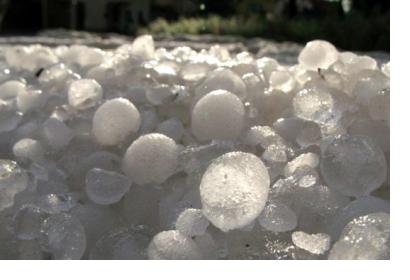Climate change is expected to increase the severity, frequency, and impacts of extreme weather events that affect ecosystems, human health and security. In a warming climate, the frequency and intensity of storm-related hazards may also be amplified. Hail is one hazard of interest due to its dangerous and destructuve nature, especially when hail particles grow to larger sizes.
The link between climate change and hail occurrence and damage remain unclear, in part because of a lack of historical data documenting hail events and because of the complex and varied topography and conditions that affect hail production. This uncertainty complicates efforts to model and forecast hail generaty accurately.
In order to tackle this issue, a group of researchers have been working on improving scientific understanding of hail in the Mediterranean Basin using satellite remote sensing.The group developed a new satellite-based method for detecting hail-bearing storms using Satellite Microwave Radiometers, followed by the quantification of the occurrence of hail events around the Mediterranean region during the period 1999-2021 using the Global Precipitation Measurement Constellation (GPM).
The goal is to explore the distribution, seasonality, and frequency of events to identify ´sub-hot-spots´ areas within the Mediterranean that are more susceptible to hail events. These studies have extended and updated the historical record of Mediterranean hail events, and it should help advance understanding of hail-generating processess, produce a global hail climatology, and illuminate possible ties between hail trends and ongoing climate change.
For more information on this study, click here.
Image: Hail. (Photo: B. Mühr/KIT, Licence: CC BY 4.0)

